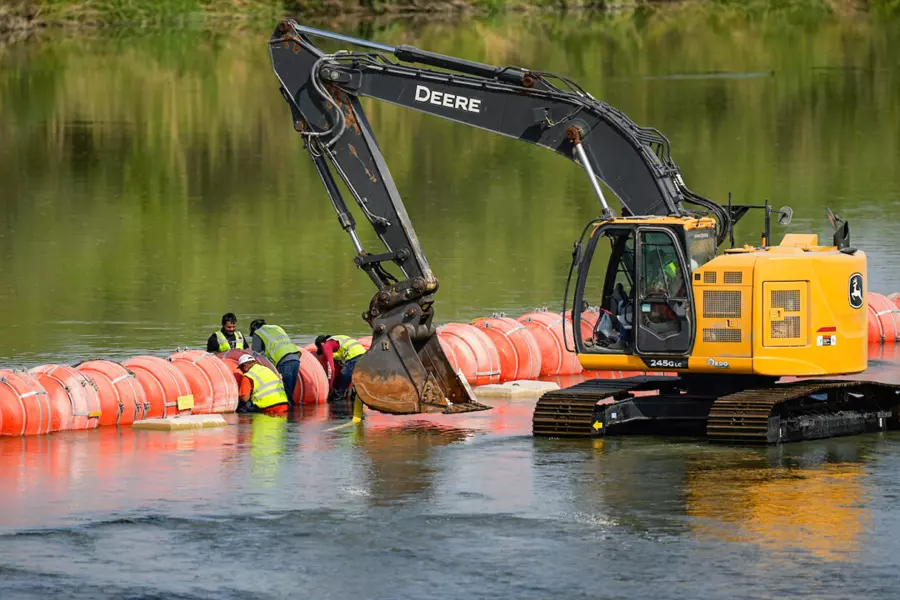The legal battle over a floating barrier on the Rio Grande continues to intensify.

Last summer, Texas Governor Greg Abbott deployed a string of giant orange buoys in the river near Eagle Pass as part of Operation Lone Star.
This initiative aimed to curb illegal border crossings from Mexico into Texas.
The buoys are anchored to the bottom and rotate so that people cannot climb over or swim under them.
The argument before the 17-member Fifth Circuit on Wednesday focused primarily on whether the floating wall, installed by Governor Abbott, violates a Reconstruction-era law regulating the use of waterways.
The Rivers and Harbors Appropriation Act of 1899 prohibits the creation of obstructions to the navigable capacity of waters unless approved by Congress and permitted by the U.S.
Army Corps of Engineers.
Texas argues that the Rio Grande is not subject to this law, stating that the stretch of river is too rocky and shallow to be reasonably called a “navigable waterway.” Lanora Pettit, the principal deputy solicitor general of Texas, claims that the interpretation of the act applies only to waterways that serve as an artery of interstate commerce across which trade or travel can be conducted.
However, she argues that the Rio Grande has too many rocks and not enough water for it to qualify.
On the other hand, attorney Michael Gray for the Justice Department urges circuit judges to uphold the district judge’s ruling that the Rio Grande was historically navigable, pointing to past ferry traffic in the area as well as the use of patrol boats by border enforcers.
He also claimed that the floating barrier interferes with the U.S.
Border Patrol officers performing their duties, potentially impairing response times for rescue operations on the river.
Both parties briefly discussed whether the floating barrier can be considered a constitutional means of defending Texas against an invasion.
Chief Judge Edith Jones questioned if the United States could thwart an attempt at self-defense in such circumstances.
The DOJ lawyer argued that an organized hostile force was required, and that the influx of illegal immigrants does not qualify as an “invasion” under the Constitution’s framers’ interpretation.
The Fifth Circuit has yet to indicate when they will rule on this case.
In a separate dispute between Texas and the U.S.
government, the Fifth Circuit is also handling another matter involving the use of Shelby Park in Eagle Pass for processing illegal immigrants by Border Patrol agents.
